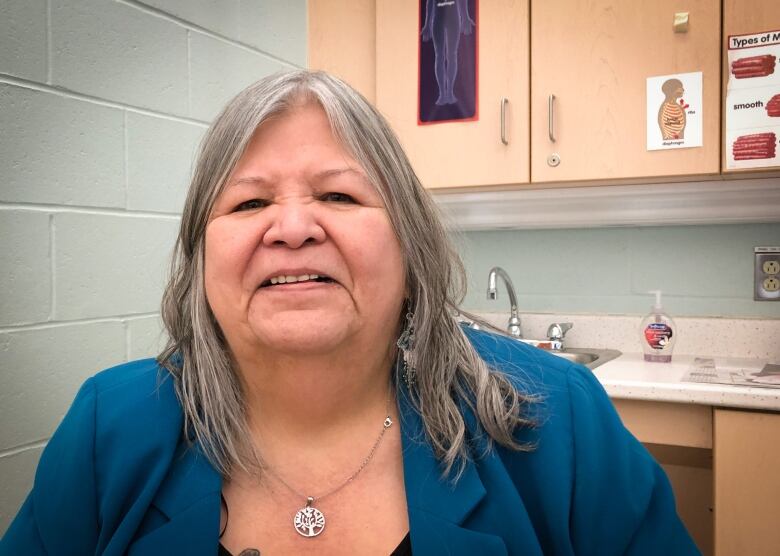N.S. elementary students starting to learn Mi'kmaw culture, history

Elementary school students across Nova Scotia are starting to learn about Mi’kmaw history and culture in the classroom under the newly released Treaty Education curriculum.
Jane Meader, a Membertou First Nation teacher and elder, helped write the books and materials for the curriculum.
She said it’s about more than just pieces of paper signed between nations hundreds of years ago.
“It’s about our way of life and it’s about teaching the non-Aboriginal public who we are — who we are today and who we were in the past,” she said.
The curriculum is currently being taught in primary to Grade 2 classes in Cape Breton and will roll out across the rest of the province this fall.
The teaching uses four cartoon animal puppets and seven books that celebrate Mi’kmaw stories and traditions.
In one story, the moose Antle learns to skate, teaching students that the Mi’kmaq were the first to use sticks and blades to play a form of ice hockey.
In another, the beaver Pikto’l goes to treaty day in Halifax, and a different story has the fox Kalolin visiting the St. Anne Mission in Potlotek.
“I like the stories,” said Meader. “I like them because I can relate to those and a lot of the Mi’kmaw children can relate to those, and it’s not something that a lot of non-Aboriginal children would have experienced.”
Officials say the new curriculum is part of the province’s commitment to inclusive education and it fulfils one of the recommendations of the Truth and Reconciliation Commission into Indian residential schools.
Meader said the Mi’kmaw people have been oppressed and marginalized for centuries. She said history books rarely include the Mi’kmaq perspective, but the new curriculum starts to address that gap in public knowledge.
Meader said the elementary school books are in the English language, but the picture books and characters — created by the Indigenous education authority Mi’kmaw Kina’matnewey — also help introduce some Mi’kmaw terms.
“I think it’s a great way of showcasing our culture and some of our language,” she said. “Like some of the words, like niskamij … and nukumi, the grandfather and grandmother and those are names that we call our grandparents.”

Jenny MacLean, the Grade Primary teacher at Brookland Elementary School in Sydney, said her students are already learning a lot from the puppets and books.
“They think they’re very cute characters and they help tell the story and so they’re starting to use those words when they’re talking and recounting the stories that we do together,” she said.
Professional development days to help teachers implement the new curriculum include a blanket exercise that helps teachers understand how the Mi’kmaq have been marginalized. They also include a smudging ceremony and history lessons on generational trauma created by the residential school system, the Sixties Scoop and other policies that have attempted to assimilate the Mi’kmaq into European — and Canadian — culture.
MacLean said that training for teachers helps put the curriculum in perspective in the classroom.
Early years students are too young to understand some of the larger concepts, but teachers need to know them, MacLean said.
“I feel that it helps me in knowing the truth and having an appreciation for why exactly this work is so important, that this next generation of students will see Mi’kmaw people in a positive light and learn about the culture in a positive way,” she said.

Carola Knockwood, executive director of Mi’kmaq Services with the Department of Education, said teachers need the resources, such as books and puppets, but they also need the context.
“One of the important things is bringing our teachings into the classroom,” she said. “We want students to have an experience around who the Mi’kmaw are and our teachings and our ways of being and knowing.”
Knockwood said an elder recently put the new curriculum into a historical perspective.
“She said, ‘You guys are doing good work,’ and then she paused for a second, and I could see her really thinking as she looked down and she said, ‘it’s a long time coming,’ and I think that captures how our communities feel,” Knockwood said.
Once the new curriculum is implemented across the entire province, the department plans to roll out a more challenging curriculum for Grade 3 students, to be followed by a more advanced one for Grades 4 to 6, she said.
MORE TOP STORIES





